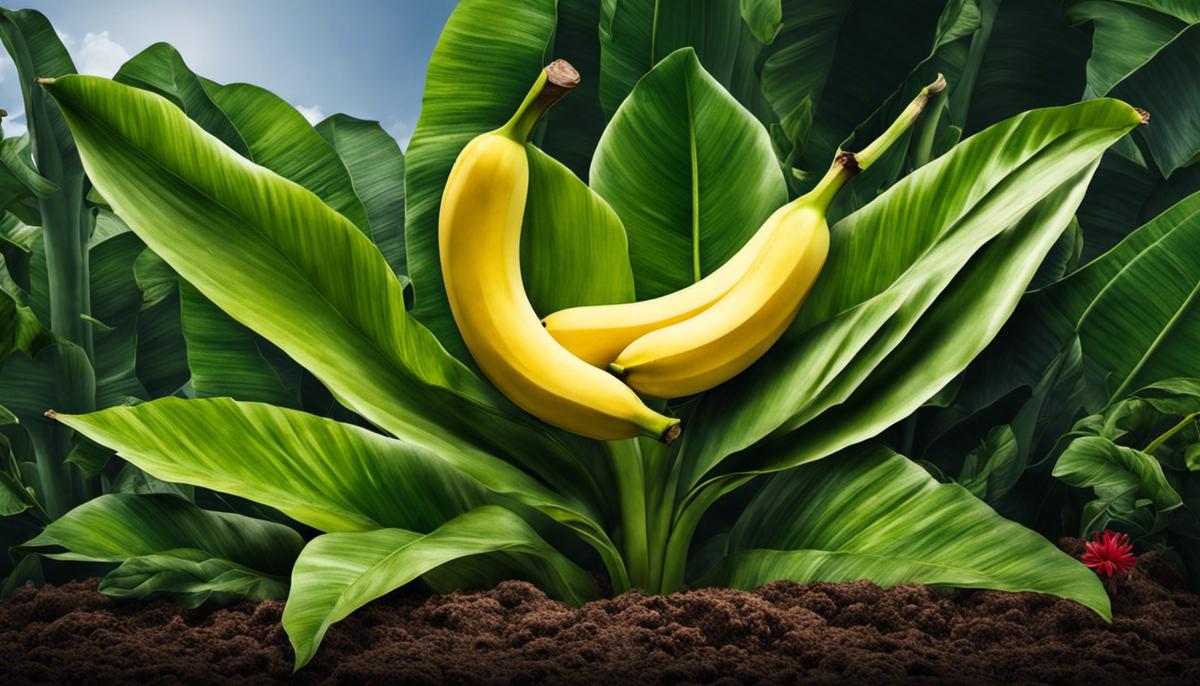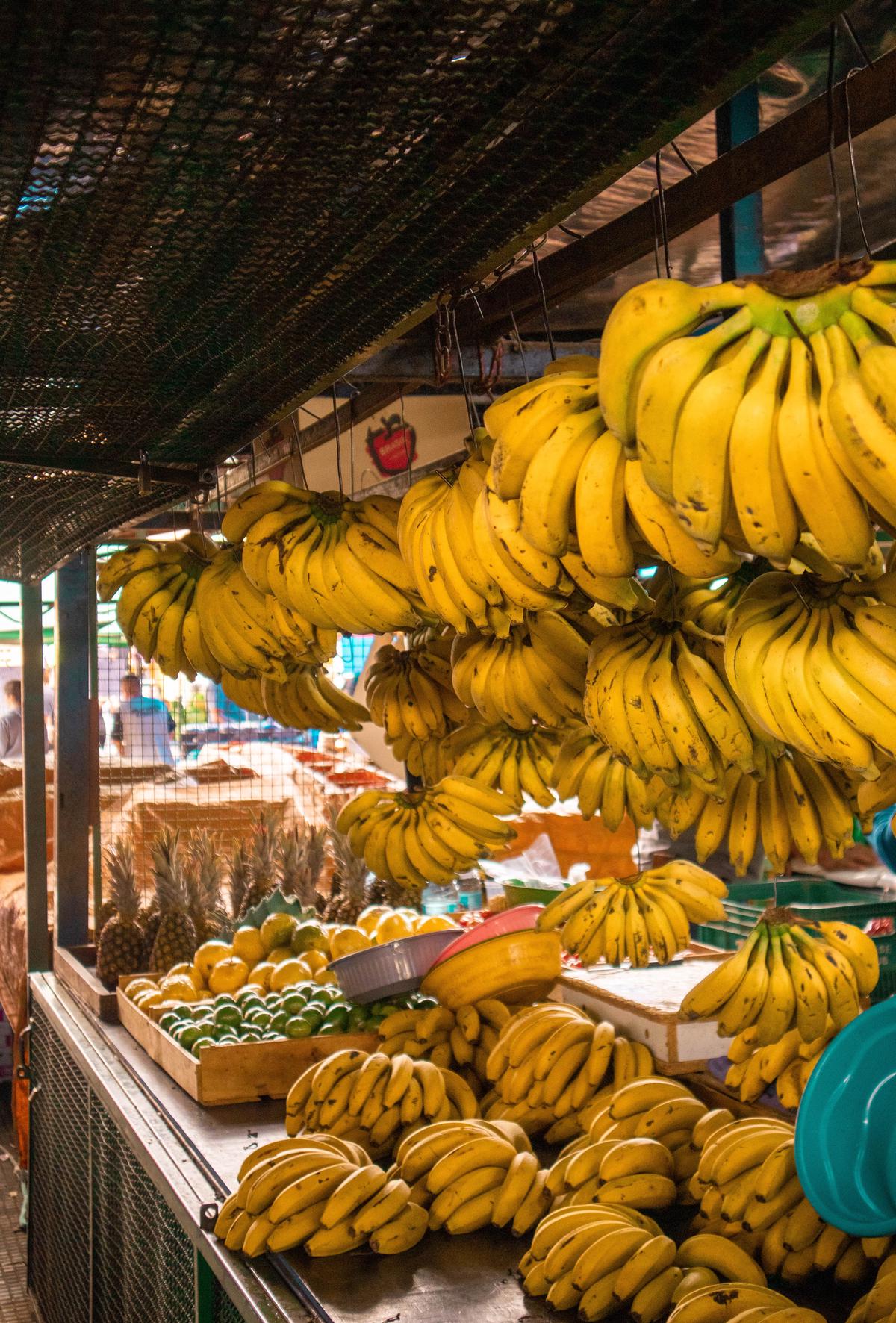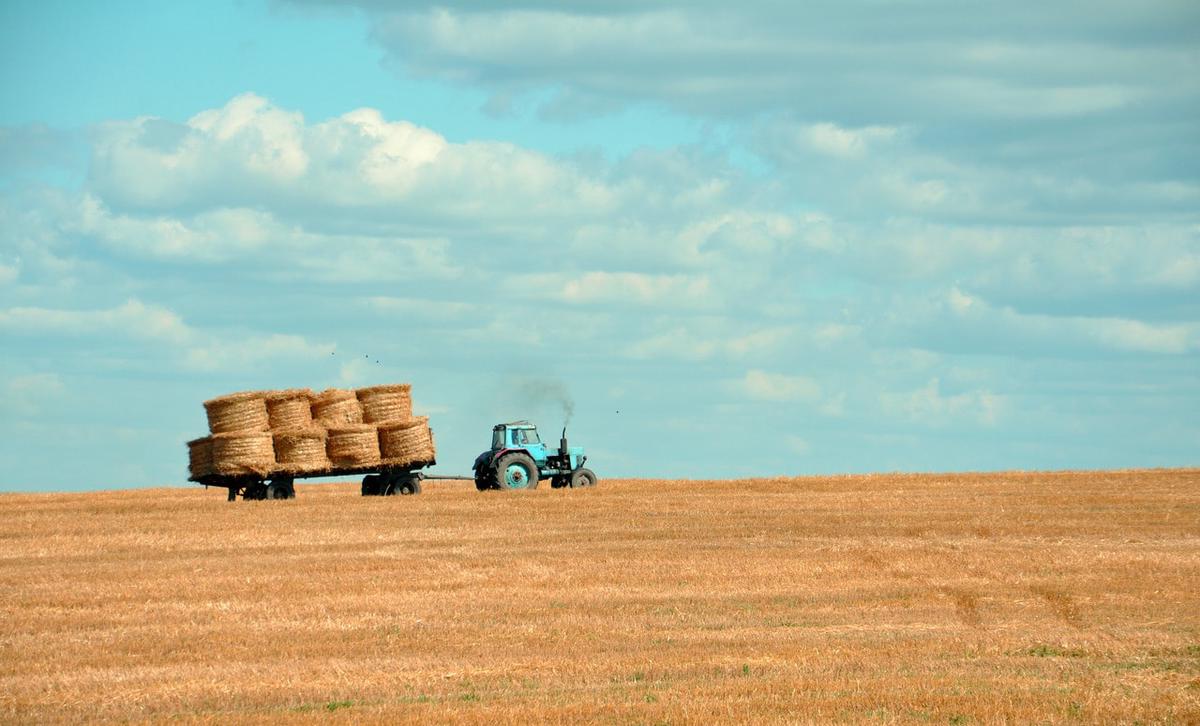Understanding the Growth Cycle of a Banana

In the world of fruits, the banana stands out with its unique crescent shape and rich, creamy taste. But beyond its familiar exterior is a series of intricate processes and factors that remarkably contribute to its growth. This discourse will commence by delving deep into the botanical intricacies that underline the growth of a banana plant, spanning from its evolution, taxonomy, and genetics, along with the optimal conditions and nutritional needs it requires to flourish. Following on, a close examination will be made on the gestation period of a banana bunch, shedding light on each growth stage from bloom through to harvest and how each stage is influenced by varying latitudinal, altitudinal, and weather conditions. Lastly, a portrait will be painted on how plantation management practices, taking into account soil maintenance, irrigation practices, pest control, and timing of harvest, fundamentally impact growth speed and overall yield of bananas.
The botanical aspect of banana growth
Unveiling Potassium Power: The Botanical Mechanisms Underpinning Banana Growth
The grandeur of botanical science lies in unearthing the intricate mechanisms that drive the growth and life cycle of plants. One such plant, the banana, stands as a unique testament to this natural sophistication. Delving into the scientific mechanisms contributing to banana growth offers a fascinating exploration into plant biology, photosynthesis, and above all, the indisputable power of potassium.
Firstly, the Botanic genus Musa, more commonly referred to as the banana plant, is a hermaphroditic perennial that thrives in the humid, tropical climates, making it an imperative crop in many regions. It propels its growth process by absorbing water and nutrients from the soil via a dense system of fibrous roots. However, it’s the pseudostem, falsely appearing as a tree trunk, where the magic truly happens.
This revered pseudostem, consisting of tightly packed leaf sheaths, shoulders the hefty responsibility of supporting the entire plant. Essential here are the parenchyma cells, which facilitate not just nutrient storage, but also engage in gas exchange through stomata, contributing to an essential process known as photosynthesis.
Photosynthesis, the cornerstone of plant biology, is just as crucial to banana growth. This biochemical process, powered primarily by sunlight, helps the plant to convert water and carbon dioxide into oxygen and glucose, acting as a crucial energy source. Essential in this process are chloroplasts – small organelles teeming with chlorophyll pigments that capture and utilize sunlight energy.
However, a significant element in the growth and development of bananas is the mineral potassium. Potassium accompanies the plant through its life cycle, influencing vital physiological processes. It regulates the opening and closing of stomata, thereby controlling water usage and transportation within the plant. Moreover, it aids in the synthesis and transport of sugars, regulates enzyme activities and strengthens the cellular structures, thus steering the overall growth and wellbeing of the plant.
Impressively, yet not surprisingly, potassium infuses the banana fruit with its recognizable curve. The differential growth rate on opposing sides of the fruit, influenced by potassium, leads to the banana’s characteristic crescent shape.
Remarkably, among the 400+ varieties of bananas today, each one is a testament to the dynamic interplay of soil, water, sunlight, temperature, and many more botanical mechanisms. The study of the banana plant thus serves as an illuminating microcosm of plant biology, offering us insights into nature’s ingenious ways.
It is hoped that by shedding light on the botanical mechanisms driving banana growth, a deeper appreciation for the complexity and beauty of plant life is gained. For, in the world of science, even the familiar can hold profound wonders. And so, the quest for enriched understanding continues; because, in botanical science, knowledge is not a destination, but a journey.

The gestation period of a banana bunch
Banana Bunch Gestation: A Profound Odyssey
While the banter of daily existence wrestles fleeting attention, it is incumbent upon us to delve into an unassuming marvel of nature: the gestation period of the banana bunch. A fruition that resists the allure of haste, it unfolds within an intricate framework of resource allocation and physiological acrobatics, reflecting a dance of nature too exquisite to ignore.
Deep within the Musa structure, a confluence of scientific phenomena shapes this majestic journey. The emergence of the inflorescence marks the dawn of this intricate process, preceding the formation of banana hands, degrees of which vary from species to species. This act of budding is typically observed 250-300 days post-planting, signifying the advent of the crop’s ostentatious display of generative prowess.
The ensuing phase of banana development exhibits an applaudable rendition of nature’s tenacity and precision. Cluster formation sees the deployment of both female and hermaphroditic flowers, their dichotomy underscored by the merit of their respective functions. Female flowers, located at the base of the inflorescence, give rise to the fruit we relish, while hermaphroditic flowers contribute to the formation of inferior, non-commercial bananas.
Subsequent fractional enlargement subsists over 60-90 days, encapsulating the phase where proto-bananas traverse the transition from the mere specks to the familiar, curved fruits. This period demands diligent irrigation and fertilization to bolster the growth dynamics, reinforcing the nutritional reservoirs for the pseudostem.
Growth hormones play an equally cardinal role, their fluctuation working in tandem with external influences to manage the gestation duration. Auxins, for instance, among the most essential phytohormones, govern cell elongation, contributing to the iconic banana curvature. Similarly, Gibberellins perch among the showrunners, directing cell division and elongation, thereby playing a crucial role in banana elongation and achieving the desired size.
The consummation of this process materializes in approximately 120 to 150 days following inflorescence; a meticulously choreographed spectacle resulting in the fully formed banana bunch ready for harvest. This phase represents the penultimate act, demanding the cessation of irrigation to prepare for the imminent harvest.
To revisit, the appreciation of the gestation period of a banana bunch goes beyond a clinical analysis of biological components. It implores a reflection on the intensity of devoted interplay among intricate mechanisms participating in this grand evolutionary escapade. It forms a testament to nature’s miraculous craftsmanship, unveiling an unprecedented scope for future research and plant innovation, fostering a perpetual advancement of understanding worthy of passionate pursuit.

Photo by giisilveira on Unsplash
Banana plantation management and care
After delving into the mysteries of the botanic genus Musa and comprehending the complex infrastructure of the pseudostem and parenchyma cells, the role these play in banana growth becomes clear. Scrutinizing processes such as photosynthesis and potassium regulation in the banana plant showcases the intricate bonding of countless factors contributing to the growth and fruitful yield of the banana crop.
Transitioning to farm management and care practices, these tangible factors greatly impact the growth and yield of a banana crop. Proper farm management emphasizes prudent irrigation, timely fertilization, and delicate handling of the crop at all stages of its growth.
Irrigation is instrumental in providing the banana plants with essential water, which constitutes a large segment of any plant’s constitution, and, undeniably, the Musa genus is no exception. It facilitates the transport of nutrients to various plant parts, thereby fostering efficient growth.
Coming to fertilization, the significance of this aspect cannot be overstated. Nutrients supplied through fertilizers largely determine the development and yield of the crop. Banana plants have a voracious appetite for nutrients. Elements such as nitrogen, phosphorus, and potassium, along with trace elements like zinc, magnesium, and boron, are mandatory for achieving a satisfactory yield. However, caution must be observed as over-fertilization might lead to deleterious effects.
Worth mentioning here is the active role of naturally occurring growth hormones in banana plants. Auxins and gibberellins regulate not only the growth, but are responsible for the timing and duration of banana gestation periods. These hormones facilitate the emergence of the inflorescence, formation of banana hands, and cluster development. Understanding this hormonal dance and optimally employing it overlays remarkable oversight in managing banana cultivation.
An essential aspect of farm management is the cessation of irrigation before the harvest. An abrupt halt in the water supply forces the plant to utilize the available nutrients and water judiciously, thus favoring the enhancement of the fruit’s physical properties, such as texture, taste, and aroma.
To surmise, understanding and application of the knowledge of biological intricacies coupled with sharp management practices are vital to ensure the optimal growth and yield of banana crops. The awe-inspiring complexity of plant life demands continuous learning. Yet, this unending exploration is an eminently fulfilling pursuit and lends enormous potential for future research and plant innovation.
This union of biological complexity and farm management principles provides an evidence-backed platform for impactful practices in banana crop cultivation. It is this confluence of biotic factors and administration practices that frame the fascinating world of banana cultivation.

Feeding into the everyday diet of over 400 million people, bananas are much more than just an easy, healthy snack option. Its growth signifies an incredible journey shaped by botanical aspects, precise growth stages, and conscious plantation management. The magic of banana production is one rooted deeply in the earth and entwined with the unruly winds of nature, in unison putting out this familiar, nutritious fruit we so love. This discovery of how a banana grows reveals the delicate balance of nature and the intricate care it takes to produce each bunch. It’s a testament to the miracles that can happen when the right conditions come together, encouraging us to respect and treasure the natural world and the fruits it bestows on us.



